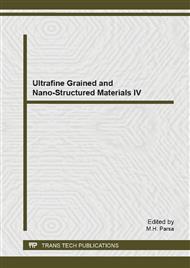p.610
p.616
p.622
p.627
p.632
p.638
p.643
p.649
p.654
Transient Liquid Phase Bonding of Al/Mg2Si Composite Using a Cu-Ni Mixed Powder
Abstract:
Transient liquid phase bonding of Al/Mg2Si metal matrix composite (MMC) was investigated using a Cu-Ni mixed powder interlayer (1:1 proportion by weight) in an argon environment at various temperatures and holding time. The composite (MMC), containing 15% Mg2Si particles, was produced by in situ technique. The use of pure copper interlayer in Al/Mg2Si metal matrix composite causes reinforcement particles segregation at the bond interface. The region of weakness produced by the particles segregation at the bond region has been found to promote preferential failure during tensile testing. Using a mixture of Ni and Cu powder as filler material have shown less segregation of particles reinforcement along central bond zone. The composition and microstructure of the joined area were examined by X-ray diffraction (XRD) and scanning electron microscopy equipped with an energy dispersive X-ray spectroscopy (EDS). Shear tests were conducted to the samples to evaluate the effect of bonding duration on weldabillity. As the bonding time increases, with continual diffusion, the structural heterogeneity is diminished, and the microporosities are eliminated at the central bond zone. The shear strength of joints increased with increasing bonding duration.
Info:
Periodical:
Pages:
632-637
Citation:
Online since:
November 2013
Authors:
Keywords:
Price:
Сopyright:
© 2014 Trans Tech Publications Ltd. All Rights Reserved
Share:
Citation:


